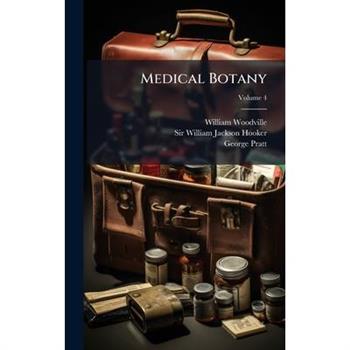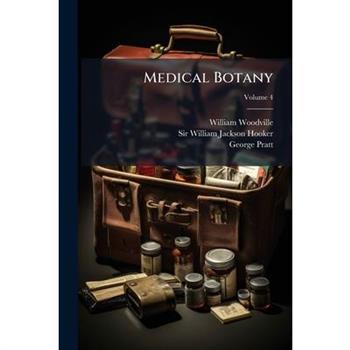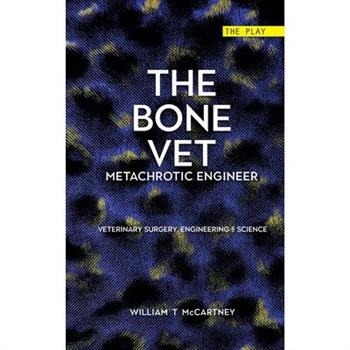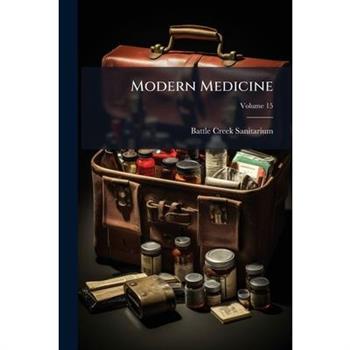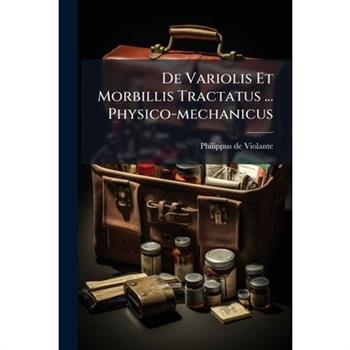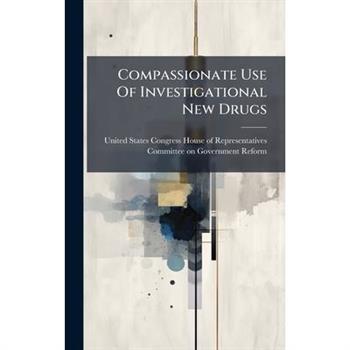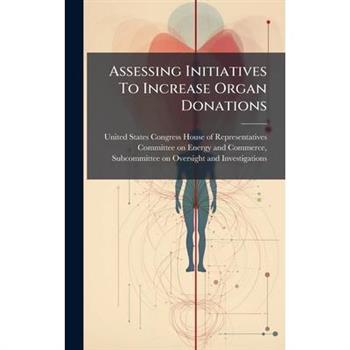The Future of Health Systems in the Fourth Industrial Revolution
The Fourth Industrial Revolution is reshaping the very foundation of healthcare, blending digital, physical, and biological innovations to redefine how health is understood and managed. In this groundbreaking study, over 70 stakeholders from 33 countries share their insights on how technologies like IoT, AI, Big Data, and robotics are revolutionizing diagnostics, treatment, and real-time patient monitoring. As nations strive to improve population health, this book delves into the challenges and facilitators of integrating these advanced technologies into healthcare systems. From overcoming organizational silos and data exchange barriers to embracing automation and Blockchain for cost reduction, the study highlights the critical success factors necessary for this transformation. With a focus on the global impact, it underscores the need for skilled professionals, supportive policies, and global collaboration to harness the full potential of Industry 4.0 in healthcare, promising a future of optimized outcomes, reduced errors, and enhanced efficiency across the world.
Anesthesia and the Central Nervous System
In ""Anesthesia and the Central Nervous System: Mechanisms and Implications,"" Si-Yuan Song, Zheng Liu, and Xiaofeng Zhang present a comprehensive exploration of the complex interactions between anesthesia and the central nervous system (CNS). This essential resource delves into the anatomy and function of the CNS, including detailed discussions of the brain and spinal cord, providing a robust foundation for understanding the profound effects of anesthesia. The book meticulously examines the role of anesthesia in modulating CNS activity, focusing on its impact on neurons, neural circuits, and synaptic plasticity. Key topics include the mechanisms through which anesthesia achieves sedation, analgesia, and muscle relaxation, as well as the intricate workings of thalamocortical circuits, sleep-wake circuits, and cortical fragmentation circuits. The authors also explore the concept of the pain matrix and its relevance to pain management, alongside the implications of reward circuits for addiction and the abuse of anesthetic drugs. By providing deep insights into the physiological and biochemical mechanisms underlying anesthesia's effects on the CNS, this book offers a vital theoretical basis for clinical anesthesia practices, pain management, and strategies for preventing and treating drug addiction. This work is an indispensable reference for anesthesiologists, neuroscientists, pain specialists, and medical professionals seeking to enhance their understanding of the interactions between anesthesia and the CNS.
On The Structure Of The Human Placenta, And Its Connections With The Uterus, &c
"On The Structure Of The Human Placenta, And Its Connections With The Uterus, &c" presents a detailed exploration of the human placenta and its intricate relationship with the uterus. Authored by Thomas Radford, this work offers valuable insights into reproductive anatomy and physiology. This book is essential reading for medical professionals, students, and historians interested in the evolution of obstetric knowledge and anatomical understanding.This work has been selected by scholars as being culturally important, and is part of the knowledge base of civilization as we know it. This work was reproduced from the original artifact, and remains as true to the original work as possible. Therefore, you will see the original copyright references, library stamps (as most of these works have been housed in our most important libraries around the world), and other notations in the work.This work is in the public domain in the United States of America, and possibly other nations. Within the United States, you may freely copy and distribute this work, as no entity (individual or corporate) has a copyright on the body of the work.As a reproduction of a historical artifact, this work may contain missing or blurred pages, poor pictures, errant marks, etc. Scholars believe, and we concur, that this work is important enough to be preserved, reproduced, and made generally available to the public. We appreciate your support of the preservation process, and thank you for being an important part of keeping this knowledge alive and relevant.
Cyclop?]dia Of The Practice Of Medicine
This volume of the "Cyclop?]dia of the Practice of Medicine" offers a comprehensive overview of medical knowledge and practices as understood at the time of its publication. Authored by Hugo Ziemssen, Albert Henry Buck, and George Livingston Peabody, it delves into various aspects of medicine. This work serves as a valuable historical resource, reflecting the evolution of medical science and the approaches to patient care prevalent in the late 19th century. Its detailed entries and systematic organization make it an invaluable reference for anyone interested in the history of medicine and the development of medical thought.This work has been selected by scholars as being culturally important, and is part of the knowledge base of civilization as we know it. This work was reproduced from the original artifact, and remains as true to the original work as possible. Therefore, you will see the original copyright references, library stamps (as most of these works have been housed in our most important libraries around the world), and other notations in the work.This work is in the public domain in the United States of America, and possibly other nations. Within the United States, you may freely copy and distribute this work, as no entity (individual or corporate) has a copyright on the body of the work.As a reproduction of a historical artifact, this work may contain missing or blurred pages, poor pictures, errant marks, etc. Scholars believe, and we concur, that this work is important enough to be preserved, reproduced, and made generally available to the public. We appreciate your support of the preservation process, and thank you for being an important part of keeping this knowledge alive and relevant.
Medical Botany
Medical Botany, Volume 4, by William Woodville, Sir William Jackson Hooker, and George Pratt, is a detailed exploration of medicinal plants as cataloged by the Royal Colleges of Physicians of London, Edinburgh, and Dublin. This volume provides systematic and general descriptions, accompanied by illustrative plates, offering an in-depth look at the plants included in the era's materia medica. A valuable resource for historians of medicine, botany enthusiasts, and those interested in the traditional uses of plants, this work showcases the intersection of botanical science and medical practice in the 19th century. The meticulous descriptions and visual representations make it an enduring reference for understanding historical approaches to pharmacology and natural remedies.This work has been selected by scholars as being culturally important, and is part of the knowledge base of civilization as we know it. This work was reproduced from the original artifact, and remains as true to the original work as possible. Therefore, you will see the original copyright references, library stamps (as most of these works have been housed in our most important libraries around the world), and other notations in the work.This work is in the public domain in the United States of America, and possibly other nations. Within the United States, you may freely copy and distribute this work, as no entity (individual or corporate) has a copyright on the body of the work.As a reproduction of a historical artifact, this work may contain missing or blurred pages, poor pictures, errant marks, etc. Scholars believe, and we concur, that this work is important enough to be preserved, reproduced, and made generally available to the public. We appreciate your support of the preservation process, and thank you for being an important part of keeping this knowledge alive and relevant.
History Of Homoeopathy And Its Institutions In America
"History Of Homoeopathy And Its Institutions In America" (Volume 1) by William Harvey King offers a comprehensive look at the development of homeopathy in the United States. This detailed record explores the origins, founders, and benefactors of homeopathic institutions, along with their faculties, officers, hospitals, and alumni. The book chronicles the achievements of homeopathic practitioners within the broader medical world, providing valuable insights into the growth and impact of this alternative medical approach in America. It is an essential resource for anyone interested in the history of medicine, alternative therapies, and the evolution of healthcare practices in the U.S.This work has been selected by scholars as being culturally important, and is part of the knowledge base of civilization as we know it. This work was reproduced from the original artifact, and remains as true to the original work as possible. Therefore, you will see the original copyright references, library stamps (as most of these works have been housed in our most important libraries around the world), and other notations in the work.This work is in the public domain in the United States of America, and possibly other nations. Within the United States, you may freely copy and distribute this work, as no entity (individual or corporate) has a copyright on the body of the work.As a reproduction of a historical artifact, this work may contain missing or blurred pages, poor pictures, errant marks, etc. Scholars believe, and we concur, that this work is important enough to be preserved, reproduced, and made generally available to the public. We appreciate your support of the preservation process, and thank you for being an important part of keeping this knowledge alive and relevant.
Rebuilding the Field of the Sense in Neurosurgery
"When I first connected with the Green Sports Alliance" Meeting the Green Sports Alliance in 2017 completely altered my career trajectory. Founded by Microsoft co-founder Paul Gardner Allen, the GSA is a non-profit dedicated to greening the sports industry and creating a sustainable future. Although sports are popular worldwide and have a great deal of influence, they also consume a lot of energy and produce a lot of waste, harming the environment. The GSA seeks to use the power of sports to raise awareness of environmental problems and inspire people to take action. I met the GSA while serving as a professor at a newly established medical school in Japan, a position I had eagerly accepted after a 38-year absence. However, my encounter with the GSA ignited a passion within me to leave academia and fully dedicate myself to the SDGs. The GSA's remarkable achievements in the sports industry inspired me to delve deeper into the environmental impact of healthcare and the global health disparities. I firmly believe that the medical field can undergo a similar transformation. Despite their crucial role in safeguarding public health, medical institutions are major contributors to environmental problems, including excessive energy consumption and waste generation, as well as social inequities in healthcare access. While the GSA has successfully utilized sports as a platform for positive change, I am convinced that the medical field has the potential to create a similar platform to address its own challenges. The integration of digital technologies, such as data sharing, telemedicine, and AI, into healthcare has the potential to transform the industry. Platformization can facilitate efficient resource allocation, patient empowerment, and the creation of novel healthcare services. This textbook is designed to equip readers with the knowledge needed to understand how platformization in healthcare can be a powerful tool for achieving the SDGs. We will delve into the specific challenges and solutions involved in building effective medical platforms.
The Immunotherapy Breakthrough
The Immunotherapy Breakthrough: Revolutionizing Cancer Care delves deep into the transformative journey of cancer immunotherapy, chronicling its rise from early theoretical concepts to its current role as a critical pillar of modern oncology. Starting with a historical overview, the book traces the pivotal moments that have defined cancer immunotherapy, including the initial discovery of tumor immunosurveillance, which illuminated the immune system's natural ability to detect and destroy cancer cells. This book details the progress made in the development of monoclonal antibodies, which have enabled targeted cancer therapies by honing in on specific cancer cell markers. It also covers the introduction and evolution of immune checkpoint modulators, which have opened up new avenues in cancer treatment by removing the brakes on the immune system, allowing it to mount a stronger attack against tumors. Chapters dedicated to engineered immune therapies explore how advances in genetic engineering and biotechnology are producing cutting-edge treatments, such as CAR-T cell therapy, that harness the body's own immune cells to fight cancer more effectively. Cancer vaccines, another area of active research, are discussed in detail, examining their role in enhancing antitumor immune responses and their potential in preventing cancer recurrence. Beyond specific therapies, the book also delves into the broader implications of immunotherapy, including the challenges it faces, such as immune evasion by tumors and managing the risks of autoimmune side effects. The discussion is rounded out with an examination of immune modulators and other emerging treatments that are expanding the scope of immunotherapy options. In its final chapters, it looks ahead to the future of cancer treatment, forecasting the shift towards more personalized approaches that tailor therapies to an individual's unique tumor profile. This comprehensive review underscores the ongoing need for interdisciplinary collaboration in research and clinical practice, painting a picture of a future where cancer immunotherapy could significantly alter treatment paradigms and lead to more durable, long-term outcomes.
Moto-sensory Development
Explore the intricate connection between movement and sensory input in "Moto-sensory Development" by George Van Ness Dearborn. This insightful work delves into the developmental stages where motor skills and sensory perception intertwine, shaping a child's understanding and interaction with the world. Dearborn's exploration provides valuable perspectives for educators, psychologists, and anyone interested in the nuances of child development.Discover how early motor experiences influence sensory processing and how sensory information, in turn, guides motor actions. This classic study remains relevant for understanding the foundational processes that underpin learning and behavior.This work has been selected by scholars as being culturally important, and is part of the knowledge base of civilization as we know it. This work was reproduced from the original artifact, and remains as true to the original work as possible. Therefore, you will see the original copyright references, library stamps (as most of these works have been housed in our most important libraries around the world), and other notations in the work.This work is in the public domain in the United States of America, and possibly other nations. Within the United States, you may freely copy and distribute this work, as no entity (individual or corporate) has a copyright on the body of the work.As a reproduction of a historical artifact, this work may contain missing or blurred pages, poor pictures, errant marks, etc. Scholars believe, and we concur, that this work is important enough to be preserved, reproduced, and made generally available to the public. We appreciate your support of the preservation process, and thank you for being an important part of keeping this knowledge alive and relevant.
Primitive Psycho-therapy And Quakery
Explore the historical roots of psychotherapy and the pervasive presence of quackery in "Primitive Psycho-therapy And Quakery" by Robert Means Lawrence. This illuminating work delves into the early forms of healing practices, examining the intersection of primitive medicine, folklore, and nascent psychological treatments. Lawrence investigates the historical context in which these practices emerged, shedding light on the beliefs and cultural influences that shaped them. From ancient rituals to early therapeutic approaches, this book offers a comprehensive look at the origins of psychological healing and the persistent phenomenon of quackery. A valuable resource for anyone interested in the history of medicine, psychology, and the enduring human quest for well-being.This work has been selected by scholars as being culturally important, and is part of the knowledge base of civilization as we know it. This work was reproduced from the original artifact, and remains as true to the original work as possible. Therefore, you will see the original copyright references, library stamps (as most of these works have been housed in our most important libraries around the world), and other notations in the work.This work is in the public domain in the United States of America, and possibly other nations. Within the United States, you may freely copy and distribute this work, as no entity (individual or corporate) has a copyright on the body of the work.As a reproduction of a historical artifact, this work may contain missing or blurred pages, poor pictures, errant marks, etc. Scholars believe, and we concur, that this work is important enough to be preserved, reproduced, and made generally available to the public. We appreciate your support of the preservation process, and thank you for being an important part of keeping this knowledge alive and relevant.
Medical Botany
Medical Botany, Volume 4, by William Woodville, Sir William Jackson Hooker, and George Pratt, is a detailed exploration of medicinal plants as cataloged by the Royal Colleges of Physicians of London, Edinburgh, and Dublin. This volume provides systematic and general descriptions, accompanied by illustrative plates, offering an in-depth look at the plants included in the era's materia medica. A valuable resource for historians of medicine, botany enthusiasts, and those interested in the traditional uses of plants, this work showcases the intersection of botanical science and medical practice in the 19th century. The meticulous descriptions and visual representations make it an enduring reference for understanding historical approaches to pharmacology and natural remedies.This work has been selected by scholars as being culturally important, and is part of the knowledge base of civilization as we know it. This work was reproduced from the original artifact, and remains as true to the original work as possible. Therefore, you will see the original copyright references, library stamps (as most of these works have been housed in our most important libraries around the world), and other notations in the work.This work is in the public domain in the United States of America, and possibly other nations. Within the United States, you may freely copy and distribute this work, as no entity (individual or corporate) has a copyright on the body of the work.As a reproduction of a historical artifact, this work may contain missing or blurred pages, poor pictures, errant marks, etc. Scholars believe, and we concur, that this work is important enough to be preserved, reproduced, and made generally available to the public. We appreciate your support of the preservation process, and thank you for being an important part of keeping this knowledge alive and relevant.
On The Structure Of The Human Placenta, And Its Connections With The Uterus, &c
"On The Structure Of The Human Placenta, And Its Connections With The Uterus, &c" presents a detailed exploration of the human placenta and its intricate relationship with the uterus. Authored by Thomas Radford, this work offers valuable insights into reproductive anatomy and physiology. This book is essential reading for medical professionals, students, and historians interested in the evolution of obstetric knowledge and anatomical understanding.This work has been selected by scholars as being culturally important, and is part of the knowledge base of civilization as we know it. This work was reproduced from the original artifact, and remains as true to the original work as possible. Therefore, you will see the original copyright references, library stamps (as most of these works have been housed in our most important libraries around the world), and other notations in the work.This work is in the public domain in the United States of America, and possibly other nations. Within the United States, you may freely copy and distribute this work, as no entity (individual or corporate) has a copyright on the body of the work.As a reproduction of a historical artifact, this work may contain missing or blurred pages, poor pictures, errant marks, etc. Scholars believe, and we concur, that this work is important enough to be preserved, reproduced, and made generally available to the public. We appreciate your support of the preservation process, and thank you for being an important part of keeping this knowledge alive and relevant.
Busting the Code to Ageing
What if I told you that premature ageing has ONE hidden culprit-and you can beat it?Imagine slowing down the ageing clock whilst keeping your youthful energy intact. It's not wishful thinking-it's science, and inflammation holds the key.Busting The Code To Ageing reveals the inflammation connection that changes everything. This isn't another skincare fad or anti-ageing myth. It's your roadmap to understanding what's really happening beneath the surface and taking control of it.Inside, you'll discover: The Real Story Behind Ageing - Complex biology made crystal clear (no PhD required!)Your Skin's Hidden Timeline - How inflammation works behind the scenes, from the wrinkles you see to the cellular drama you don'tYour Anti-Inflammation Arsenal - Proven strategies that actually work: - Food as medicine-what to eat and what to ditch - Smart skincare that targets the root cause - Simple lifestyle shifts with powerful results- Stress-busting techniques that show on your face - When to call in the professionalsThe truth? Your skin began its ageing journey years before that first line appeared. But here's the brilliant news-armed with this knowledge, you can rewrite your skin's future story.Ready to crack the ageing code? Your most radiant years are still ahead of you.
Nature Cure Philosophy & Practice Based On The Unity Of Disease & Cure
Nature cure: Philosophy & practice based on the unity of disease & cure is a holistic health treatise. The book advocates for a natural and preventive approach to health care, emphasizing the importance of understanding the fundamental laws of health, disease, and healing. Lindlahr presents a critique of conventional medical practices that focus primarily on combative methods, promoting instead the core philosophy of building health through natural means. Lindlahr argues that while the former relies heavily on drugs and surgery to fight disease, the latter seeks to prevent disease by fostering a healthy lifestyle and maintaining a strong immune system. He critiques the reliance on pharmaceutical solutions and surgical interventions, suggesting that true healing comes from aligning with nature s laws. Furthermore, he underscores the need for individuals to take responsibility for their health and to adopt practices that promote well-being, such as proper diet, cleanliness, and mental wellness. Overall, the beginning of Nature cure emphasizes a transformative understanding of health that relies on natural living and self-education rather than reliance on conventional medical practices.
The Narcotic Drug Problem
The narcotic drug problem is a scientific work addressing narcotic addiction as a physical disease rather than a moral failing. The author draws from clinical experience to argue that addiction should be seen through a medical lens, focusing on its physiological realities. The opening of the text reveals the author's initial misconceptions about addicts, which are later challenged by a deeper understanding of addiction's medical aspects. The narrative critiques previous treatment approaches, urging a paradigm shift toward recognizing addiction as a complex physical condition. This work highlights the suffering of narcotic addicts, emphasizing their need for empathy and medical intervention rather than judgment. The author stresses the importance of shifting public perception and medical practice to focus on addiction s physiological nature, arguing that many addicts are victims of a serious health issue rather than moral weakness. The publication aims to raise awareness, ultimately advocating for more effective treatments that can alleviate the societal burden of addiction and provide a compassionate, science-based approach to its management.
Obstacles to antiretroviral treatment among displaced persons living with HIV in armed conflict
The effectiveness of antiretroviral therapy (ART) depends on good adherence. Although treatment is increasingly available to the general population, refugees and internally displaced persons (IDPs) face many challenges in obtaining ARVs and maintaining optimal adherence. A mixed-method study (quantitative and qualitative) was conducted from April 2021 to June 2023 in the provinces of North Kivu and Ituri in Eastern DRC. Displaced PLHIV and those from the host population; service providers involved in the care of PLHIV; officials from the National HIV/AIDS Control Program and technical and financial partners in the fight against HIV were surveyed on the obstacles to ARV treatment for displaced people in eastern DRC. The main reasons for not taking ART were: forgetfulness, lack of food, occupation and travel, distance between camp and hospital of more than an hour, patient dissatisfaction, opportunistic infections, stigmatization, lack of money for transport, non-membership of a support group and lack of knowledge of supply points. With regard to ARV supply, the main difficulties mentioned were: the absence of an ARV supply circuit for displaced people in their respective areas. The strategy proposed to make ARV treatment available was to supply structures close to the camps with ARV drugs. Forced displacement of people living with HIV encourages non-adherence to antiretroviral treatment. Lack of money for transport, food insecurity, stigmatization, lack of knowledge of supply points, non-membership of a support group and the non-existence of an appropriate ARV supply circuit among displaced people, which cause ARV stock-outs, have been identified as obstacles to treatment compliance. The fight against food insecurity, the financial autonomy of PLHIV, the intensification of HIV awareness campaigns, membership of a support group, the establishment of an information circuit between health zones and the inclusion of ART among the drugs subject to rapid assessment for displaced people, and the supply of ART to structures close to the camps are all recommendations for improving ART adherence.
Utilization Of Male Targeted Short Message Service To Enhance Family Planning Uptake
Family planning helps in regulating the number of children and determine healthy spacing and timing of births between pregnancies. Approximately 190 million women of reproductive age worldwide are not using any family planning method. The global contraceptive prevalence stands at 49.0% with Sub-Saharan Africa accounting for 29.0 %. In Kenya the modern contraceptive prevalence rate stands at 56.9% while in Marsabit County stands at 5.6%. Male spouse involvement on matters of family planning deserves attention. Male spouses can be involved through providing culturally friendly health education with child spacing messages rather than family planning itself. This study aimed at evaluate the utilization of male targeted short message service in enhancing family planning uptake among their spouses in Marsabit County. This study adopted a pre-test and posttest quasi experimental study design involving randomly selected 220 couples from Laisamis (control group) and Moyale (intervention group) sub-counties. Intervention of male targeted short message service was offered to male spouses from Moyale sub-county while Laisamis subcounty was used as a control at a ratio of 1:1 for a period of 4 months. The data collection instruments used included a questionnaire and key informant interview guides. Quantitative data analysis was done using SPSS while qualitative were categorized and analyzed thematically. At evaluation, logistic regression analysis and McNemar test were used to measure the effectiveness of SMS intervention. . All the required ethical and logistical considerations were adhered to accordingly. The results revealed that at baseline level of uptake was 13.2% and 15.4%, high level of knowledge 14.0% and 12.0% and positive attitude 38.6% and 6.8% for control and intervention arms respectively. Uptake of family planning was increased by 3.6 times though use of short message service (OR 3.6, P
Coconut Oil and Epigallocatechin Gallate Against Multiple Sclerosis
Neurodegenerative diseases currently represent one of the main health challenges of the first world. The increase in life expectancy, as well as the growing exposure to environmental factors such as air pollution, make the prevalence of this type of pathologies grow exponentially. To this must be added the fact that there is currently no cure, which, together with the great dependence and emotional impact on patients, means that both patients and their families suffer an enormous loss in their quality of life, representing a significant public expense as well. Faced with this situation, it is essential to consider new non-pharmacological alternatives that can improve the clinical condition. Among these neurodegenerative diseases, multiple sclerosis (MS) stands out as the most disabling neurodegenerative disease in young adults. Its incidence is increasing worldwide, and the efficacy of pharmacological treatments is particularly limited, producing significant side effects in many cases. This is why we have tried to improve pathologically, all the aspects that have been described as particularly severe for this disease; MS stands out for being tremendously disabling, and for showing serious alterations both emotionally (with high rates of depression and anxiety), and functionally (mainly derived from progressive muscle loss) and biochemically (with high levels of oxidative stress and inflammation). For this, given the great benefits that have been described for ketone bodies, we proposed an intervention based on the administration of large amounts of coconut oil daily as the main source of ketone bodies in the blood. In addition, given the great benefits demonstrated in human and animal models of MS, we supplemented this intervention with the potent antioxidant epigallocatechin gallate (EGCG).
Medical Reports
This collection of "Medical Reports" offers a fascinating glimpse into the state of medical knowledge and public health in China. Compiled by the Hai guan zong shui wu si shu (Maritime Customs Service), these reports provide valuable insights into the diseases, treatments, and health conditions prevalent during the late 19th and early 20th centuries. They offer a unique perspective on the challenges faced by both Chinese and foreign medical practitioners working in the region. These historical documents are an invaluable resource for researchers interested in the history of medicine, public health, and Sino-Western relations. This compilation sheds light on the medical practices and prevailing health concerns of a bygone era.This work has been selected by scholars as being culturally important, and is part of the knowledge base of civilization as we know it. This work was reproduced from the original artifact, and remains as true to the original work as possible. Therefore, you will see the original copyright references, library stamps (as most of these works have been housed in our most important libraries around the world), and other notations in the work.This work is in the public domain in the United States of America, and possibly other nations. Within the United States, you may freely copy and distribute this work, as no entity (individual or corporate) has a copyright on the body of the work.As a reproduction of a historical artifact, this work may contain missing or blurred pages, poor pictures, errant marks, etc. Scholars believe, and we concur, that this work is important enough to be preserved, reproduced, and made generally available to the public. We appreciate your support of the preservation process, and thank you for being an important part of keeping this knowledge alive and relevant.
Milwaukee Medical Journal, Volume 4, Issue 5
Explore the historical landscape of medicine with the "Milwaukee Medical Journal, Volume 4, Issue 5." This vintage journal offers a unique glimpse into the medical practices, research, and discussions of its time. A valuable resource for historians, medical professionals, and anyone interested in the evolution of healthcare, this issue provides a snapshot of the medical community in Milwaukee during the period it was published.Delve into articles, case studies, and reports that reflect the prevailing medical knowledge and challenges of the era. Gain insights into the treatments, technologies, and perspectives that shaped the field of medicine. Whether you're a student, researcher, or simply curious about the past, the "Milwaukee Medical Journal" offers a fascinating window into the world of medicine.This work has been selected by scholars as being culturally important, and is part of the knowledge base of civilization as we know it. This work was reproduced from the original artifact, and remains as true to the original work as possible. Therefore, you will see the original copyright references, library stamps (as most of these works have been housed in our most important libraries around the world), and other notations in the work.This work is in the public domain in the United States of America, and possibly other nations. Within the United States, you may freely copy and distribute this work, as no entity (individual or corporate) has a copyright on the body of the work.As a reproduction of a historical artifact, this work may contain missing or blurred pages, poor pictures, errant marks, etc. Scholars believe, and we concur, that this work is important enough to be preserved, reproduced, and made generally available to the public. We appreciate your support of the preservation process, and thank you for being an important part of keeping this knowledge alive and relevant.
Dr. Henry Gibbons
Dr. Henry Gibbons: In Memoriam commemorates the life and work of Dr. Henry Gibbons and includes the inaugural "Lane Lectures" delivered in his honor at Cooper Medical College on January 2, 1885. This volume offers insights into 19th-century medical education and practice, providing a historical perspective on the evolution of medicine. The lecture, presented by Levi Cooper Lane, serves as a tribute to Gibbons' contributions to the medical field.This publication is a valuable resource for historians of medicine, biographers, and anyone interested in the intellectual and professional life of a prominent 19th-century physician. It provides a glimpse into the medical landscape of the era and the significance of individuals like Dr. Gibbons in shaping its trajectory.This work has been selected by scholars as being culturally important, and is part of the knowledge base of civilization as we know it. This work was reproduced from the original artifact, and remains as true to the original work as possible. Therefore, you will see the original copyright references, library stamps (as most of these works have been housed in our most important libraries around the world), and other notations in the work.This work is in the public domain in the United States of America, and possibly other nations. Within the United States, you may freely copy and distribute this work, as no entity (individual or corporate) has a copyright on the body of the work.As a reproduction of a historical artifact, this work may contain missing or blurred pages, poor pictures, errant marks, etc. Scholars believe, and we concur, that this work is important enough to be preserved, reproduced, and made generally available to the public. We appreciate your support of the preservation process, and thank you for being an important part of keeping this knowledge alive and relevant.
Memorial Discourses On The Life And Services Of Corydon L. Ford
This volume comprises memorial discourses delivered in University Hall on June 10, 1894, honoring the life and services of Corydon L. Ford, a distinguished figure at the University of Michigan. Presented at the request of the Senate, the collection includes tributes by prominent figures such as Victor Clarence Vaughan and Martin Luther D'Ooge. These discourses delve into Ford's significant contributions to medical education and anatomical science, highlighting his impact on students and the broader academic community. The speeches offer valuable insights into the academic environment of the late 19th century and the development of medical studies at a major American university. "Memorial Discourses On The Life And Services Of Corydon L. Ford" serves as a historical record and a testament to Ford's lasting legacy.This work has been selected by scholars as being culturally important, and is part of the knowledge base of civilization as we know it. This work was reproduced from the original artifact, and remains as true to the original work as possible. Therefore, you will see the original copyright references, library stamps (as most of these works have been housed in our most important libraries around the world), and other notations in the work.This work is in the public domain in the United States of America, and possibly other nations. Within the United States, you may freely copy and distribute this work, as no entity (individual or corporate) has a copyright on the body of the work.As a reproduction of a historical artifact, this work may contain missing or blurred pages, poor pictures, errant marks, etc. Scholars believe, and we concur, that this work is important enough to be preserved, reproduced, and made generally available to the public. We appreciate your support of the preservation process, and thank you for being an important part of keeping this knowledge alive and relevant.
Medical Reports
This collection of "Medical Reports" offers a fascinating glimpse into the state of medical knowledge and public health in China. Compiled by the Hai guan zong shui wu si shu (Maritime Customs Service), these reports provide valuable insights into the diseases, treatments, and health conditions prevalent during the late 19th and early 20th centuries. They offer a unique perspective on the challenges faced by both Chinese and foreign medical practitioners working in the region. These historical documents are an invaluable resource for researchers interested in the history of medicine, public health, and Sino-Western relations. This compilation sheds light on the medical practices and prevailing health concerns of a bygone era.This work has been selected by scholars as being culturally important, and is part of the knowledge base of civilization as we know it. This work was reproduced from the original artifact, and remains as true to the original work as possible. Therefore, you will see the original copyright references, library stamps (as most of these works have been housed in our most important libraries around the world), and other notations in the work.This work is in the public domain in the United States of America, and possibly other nations. Within the United States, you may freely copy and distribute this work, as no entity (individual or corporate) has a copyright on the body of the work.As a reproduction of a historical artifact, this work may contain missing or blurred pages, poor pictures, errant marks, etc. Scholars believe, and we concur, that this work is important enough to be preserved, reproduced, and made generally available to the public. We appreciate your support of the preservation process, and thank you for being an important part of keeping this knowledge alive and relevant.
The Bone Vet
This play is intended for all to read. It is a combination of veterinary surgery, engineering and science. It outlines the various disciplines and problems that a surgeon must deal with day to day. Examples of actual cases are provided to bring all the science and medicine together. Each topic is explored and teased out in a certain way to merge the concepts. The focus on implant design is deliberate, with the intention of hopefully rallying support for an alternative approach. Ultimately, it is a call for change: human implant certification is strictly controlled to ensure compliance for safe use in humans; veterinary implants do not require such certification.
Dual Character Of The Brain, Etc. (the Toner Lectures. Lecture Ii.)
Explore the intricate workings of the human brain with "Dual Character Of The Brain, Etc. (the Toner Lectures. Lecture Ii.)" by afterwards BROWN-S?QUARD BROWN (Charles Edward). This lecture delves into the complexities of cerebral organization, examining the dual roles and functions within the brain. Gain insights into early neurological theories and the pioneering research of Brown-S矇quard.This historical lecture offers a unique perspective on the development of neuroscience and cognitive psychology. Ideal for students, researchers, and anyone interested in the evolution of our understanding of the human brain. Discover the foundations upon which modern neuroscience has been built, through the observations and insights presented in this significant work.This work has been selected by scholars as being culturally important, and is part of the knowledge base of civilization as we know it. This work was reproduced from the original artifact, and remains as true to the original work as possible. Therefore, you will see the original copyright references, library stamps (as most of these works have been housed in our most important libraries around the world), and other notations in the work.This work is in the public domain in the United States of America, and possibly other nations. Within the United States, you may freely copy and distribute this work, as no entity (individual or corporate) has a copyright on the body of the work.As a reproduction of a historical artifact, this work may contain missing or blurred pages, poor pictures, errant marks, etc. Scholars believe, and we concur, that this work is important enough to be preserved, reproduced, and made generally available to the public. We appreciate your support of the preservation process, and thank you for being an important part of keeping this knowledge alive and relevant.
Dr. Henry Gibbons
Dr. Henry Gibbons: In Memoriam commemorates the life and work of Dr. Henry Gibbons and includes the inaugural "Lane Lectures" delivered in his honor at Cooper Medical College on January 2, 1885. This volume offers insights into 19th-century medical education and practice, providing a historical perspective on the evolution of medicine. The lecture, presented by Levi Cooper Lane, serves as a tribute to Gibbons' contributions to the medical field.This publication is a valuable resource for historians of medicine, biographers, and anyone interested in the intellectual and professional life of a prominent 19th-century physician. It provides a glimpse into the medical landscape of the era and the significance of individuals like Dr. Gibbons in shaping its trajectory.This work has been selected by scholars as being culturally important, and is part of the knowledge base of civilization as we know it. This work was reproduced from the original artifact, and remains as true to the original work as possible. Therefore, you will see the original copyright references, library stamps (as most of these works have been housed in our most important libraries around the world), and other notations in the work.This work is in the public domain in the United States of America, and possibly other nations. Within the United States, you may freely copy and distribute this work, as no entity (individual or corporate) has a copyright on the body of the work.As a reproduction of a historical artifact, this work may contain missing or blurred pages, poor pictures, errant marks, etc. Scholars believe, and we concur, that this work is important enough to be preserved, reproduced, and made generally available to the public. We appreciate your support of the preservation process, and thank you for being an important part of keeping this knowledge alive and relevant.
Memorial Discourses On The Life And Services Of Corydon L. Ford
This volume comprises memorial discourses delivered in University Hall on June 10, 1894, honoring the life and services of Corydon L. Ford, a distinguished figure at the University of Michigan. Presented at the request of the Senate, the collection includes tributes by prominent figures such as Victor Clarence Vaughan and Martin Luther D'Ooge. These discourses delve into Ford's significant contributions to medical education and anatomical science, highlighting his impact on students and the broader academic community. The speeches offer valuable insights into the academic environment of the late 19th century and the development of medical studies at a major American university. "Memorial Discourses On The Life And Services Of Corydon L. Ford" serves as a historical record and a testament to Ford's lasting legacy.This work has been selected by scholars as being culturally important, and is part of the knowledge base of civilization as we know it. This work was reproduced from the original artifact, and remains as true to the original work as possible. Therefore, you will see the original copyright references, library stamps (as most of these works have been housed in our most important libraries around the world), and other notations in the work.This work is in the public domain in the United States of America, and possibly other nations. Within the United States, you may freely copy and distribute this work, as no entity (individual or corporate) has a copyright on the body of the work.As a reproduction of a historical artifact, this work may contain missing or blurred pages, poor pictures, errant marks, etc. Scholars believe, and we concur, that this work is important enough to be preserved, reproduced, and made generally available to the public. We appreciate your support of the preservation process, and thank you for being an important part of keeping this knowledge alive and relevant.
Der Baunscheidtismus Oder Die Baunscheidt'sche Heilmethode Im Gebiete Der Gicht, Des Rheumatismus Mittelst Des F?1/4r Dieselbe Construinten Instrumentes, Genannt
"Der Baunscheidtismus Oder Die Baunscheidt'sche Heilmethode Im Gebiete Der Gicht, Des Rheumatismus Mittelst Des F?1/4r Dieselbe Construinten Instrumentes, Genannt Der 'Lebenswecker'" explores the Baunscheidt method of healing, specifically its application to gout and rheumatism. Written by Karl Baunscheidt, the book details the use of an instrument called the 'Lebenswecker' (life awakener) in this healing approach. This historical text provides insight into alternative medical practices of the time, offering a detailed account of the Baunscheidt method and its purported benefits. It is a valuable resource for those interested in the history of medicine and alternative treatments for joint ailments.This work has been selected by scholars as being culturally important, and is part of the knowledge base of civilization as we know it. This work was reproduced from the original artifact, and remains as true to the original work as possible. Therefore, you will see the original copyright references, library stamps (as most of these works have been housed in our most important libraries around the world), and other notations in the work.This work is in the public domain in the United States of America, and possibly other nations. Within the United States, you may freely copy and distribute this work, as no entity (individual or corporate) has a copyright on the body of the work.As a reproduction of a historical artifact, this work may contain missing or blurred pages, poor pictures, errant marks, etc. Scholars believe, and we concur, that this work is important enough to be preserved, reproduced, and made generally available to the public. We appreciate your support of the preservation process, and thank you for being an important part of keeping this knowledge alive and relevant.
Modern Medicine
"Modern Medicine, Volume 15" offers a detailed look at the medical practices and perspectives of the late nineteenth and early twentieth centuries. Authored by the Battle Creek Sanitarium, this volume provides valuable insights into the evolving field of medicine, reflecting the approaches and understandings of the time. A must-read for anyone interested in the history of medicine and healthcare.This work has been selected by scholars as being culturally important, and is part of the knowledge base of civilization as we know it. This work was reproduced from the original artifact, and remains as true to the original work as possible. Therefore, you will see the original copyright references, library stamps (as most of these works have been housed in our most important libraries around the world), and other notations in the work.This work is in the public domain in the United States of America, and possibly other nations. Within the United States, you may freely copy and distribute this work, as no entity (individual or corporate) has a copyright on the body of the work.As a reproduction of a historical artifact, this work may contain missing or blurred pages, poor pictures, errant marks, etc. Scholars believe, and we concur, that this work is important enough to be preserved, reproduced, and made generally available to the public. We appreciate your support of the preservation process, and thank you for being an important part of keeping this knowledge alive and relevant.
De Variolis Et Morbillis Tractatus ... Physico-mechanicus
"De Variolis Et Morbillis Tractatus ... Physico-mechanicus" by Philippus de Violante offers a historical perspective on the understanding and treatment of smallpox and measles during the 18th century. This treatise delves into the physico-mechanical aspects of these diseases, reflecting the medical theories and practices prevalent at the time.Examining the epidemiology and clinical understanding of these highly contagious diseases, the book provides insights into the challenges faced by physicians and the approaches they adopted in managing outbreaks. It will be of interest to scholars and researchers studying the history of medicine, epidemiology, and the evolution of medical thought.This work has been selected by scholars as being culturally important, and is part of the knowledge base of civilization as we know it. This work was reproduced from the original artifact, and remains as true to the original work as possible. Therefore, you will see the original copyright references, library stamps (as most of these works have been housed in our most important libraries around the world), and other notations in the work.This work is in the public domain in the United States of America, and possibly other nations. Within the United States, you may freely copy and distribute this work, as no entity (individual or corporate) has a copyright on the body of the work.As a reproduction of a historical artifact, this work may contain missing or blurred pages, poor pictures, errant marks, etc. Scholars believe, and we concur, that this work is important enough to be preserved, reproduced, and made generally available to the public. We appreciate your support of the preservation process, and thank you for being an important part of keeping this knowledge alive and relevant.
Mercy And Truth
Mercy and Truth, Volume 6 offers a detailed record of the Church Missionary Society's (CMS) medical mission work. This volume provides insight into the medical challenges and triumphs faced by missionaries as they provided healthcare in various parts of the world. It details the day-to-day realities of offering medical aid, coupled with spiritual support, to communities in need.Highlighting the intersection of faith and medicine, this record captures the dedication and perseverance of those who sought to improve the lives of others through compassionate care. Readers interested in the history of medical missions, the role of religious organizations in global healthcare, or the personal stories of missionaries will find this volume a compelling and informative read.This work has been selected by scholars as being culturally important, and is part of the knowledge base of civilization as we know it. This work was reproduced from the original artifact, and remains as true to the original work as possible. Therefore, you will see the original copyright references, library stamps (as most of these works have been housed in our most important libraries around the world), and other notations in the work.This work is in the public domain in the United States of America, and possibly other nations. Within the United States, you may freely copy and distribute this work, as no entity (individual or corporate) has a copyright on the body of the work.As a reproduction of a historical artifact, this work may contain missing or blurred pages, poor pictures, errant marks, etc. Scholars believe, and we concur, that this work is important enough to be preserved, reproduced, and made generally available to the public. We appreciate your support of the preservation process, and thank you for being an important part of keeping this knowledge alive and relevant.
Health-Harming Legal Needs
Health-Harming Legal Needs equips primary health care professionals with the tools to recognize and respond to legal issues that are injurious to health, particularly among low-income patients. Co-developed by medical and legal experts, this book advances health equity through the integration of legal support into clinical care.Utilizing a practical, case-based approach, it helps clinicians identify when legal issues such as eviction, denial of social benefits, immigration status, family breakdown, discrimination at work, or criminal legal system involvement may be undermining their patients' health. It also focuses on several patient populations with unique legal needs, including pediatric patients, people living with HIV, Indigenous peoples, and people living with intellectual or developmental disabilities. It demystifies the legal systems that patients interact with and builds clinician confidence in navigating and leveraging community legal support. Central to the book is the introduction of Health and Justice Partnerships, a flexible, collaborative model that brings legal and health professionals together to address the root causes of poor health. By fostering shared understanding and joint dialogue across sectors, the text shows how meaningful legal-health collaboration can enhance patient care, reduce provider burnout, and promote equity and access to justice.Through real-world examples and actionable guidance, the book underscores that legal support can make a decisive difference in moments that feel hopeless - for both patients and care teams. It ultimately encourages clinicians to see legal advocacy as part of a holistic approach to care and offers a road map for integrating this perspective into their practice.
Ultrasound of the Chest
Original edition reissued in 2023 with new cover. This is a print on demand title and is not held in stock. The delivery leadtimes will be longer. Ultrasound scanners are available in an increasing number of clinical areas. They are excellent for identifying the presence of a pleural effusion and the optimal site for aspration. The National Patient Safety Agency recommends their use prior to insertion of chest drains for pleural effusions. This book is for clinicians who want to start using portable ultrasound scanners to look at the chest. It will teach you some basic physics and how to adjust the controls on the scanner. Then you will learn how to recognise a pleural effusion. When you are proficient at identifying pleural effusions, you can start to look for some of the other clinical conditions which are shown in the many illustrations in this book. There are examples of the artefacts which may catch you out, with diagrams to explain how they are caused. Once you have started to use ultrasound at the bedside, you will not want to undertake blind pleural aspirations ever again. Competency in this technique is becoming the norm for those involved in managing patients with disease of the chest; this book will help you along that road.
The Unbreakable Mind
The Unbreakable Mind: Proven Strategies to Strengthen Your Cognitive Power with Lifelong ClarityBy Dr. David BrainardUnlock the secrets to a sharper, stronger mind with The Unbreakable Mind by Dr. David Brainard. This groundbreaking book offers scientifically backed strategies to harness neuroplasticity, boost cognitive power, and achieve lifelong clarity. Whether you're looking to enhance memory, master focus, or build mental resilience, this comprehensive guide provides the tools you need to transform your brain and life-at any age.Drawing from cutting-edge research and practical insights, Dr. Brainard explores powerful chapters, including: ✅ Understanding Neuroplasticity - Rewire your brain for peak performance ✅ Nutrition for a Healthy Brain - Fuel your mind with the right foods ✅ The Role of Sleep in Cognitive Performance - Optimize rest for sharper thinking ✅ Stress Management & Mental Resilience - Thrive under pressure with proven techniques ✅ Memory Enhancement Techniques - Retain and recall with ease ✅ The Aging Brain - Debunk myths and maintain brain health as you age ✅ Future Directions in Brain Research - Stay ahead with emerging scienceThe Unbreakable Mind dives deep into the mind-brain connection, offering tailored strategies for focus, creativity, emotional intelligence, and more. From the impact of exercise and social interaction to the role of positivity and genetics.Perfect for professionals, lifelong learners, and anyone seeking brain health and mental clarity, this book is your roadmap to cognitive mastery. Say goodbye to brain fog and hello to a resilient, focused, and unbreakable mind. Start your journey today and unlock your brain's full potential! Scroll to the top and click "Add to Cart"
Your Genes, Your Health And Personalised Medicine
Original edition reissued in 2023 with new cover. This is a print on demand title and is not held in stock. The delivery leadtimes will be longer. Intended to clarify how genes influence health, this handbook helps to estimate levels of risk for a number of common diseases. With valuable information regarding a number of genetic tests, this guide steers individuals to choose accurate medications and aids nutritionists, dieticians, and holistic health practitioners develop a diet plan that best suits individual physiologies.
Der Baunscheidtismus Oder Die Baunscheidt'sche Heilmethode Im Gebiete Der Gicht, Des Rheumatismus Mittelst Des F?1/4r Dieselbe Construinten Instrumentes, Genannt
"Der Baunscheidtismus Oder Die Baunscheidt'sche Heilmethode Im Gebiete Der Gicht, Des Rheumatismus Mittelst Des F?1/4r Dieselbe Construinten Instrumentes, Genannt Der 'Lebenswecker'" explores the Baunscheidt method of healing, specifically its application to gout and rheumatism. Written by Karl Baunscheidt, the book details the use of an instrument called the 'Lebenswecker' (life awakener) in this healing approach. This historical text provides insight into alternative medical practices of the time, offering a detailed account of the Baunscheidt method and its purported benefits. It is a valuable resource for those interested in the history of medicine and alternative treatments for joint ailments.This work has been selected by scholars as being culturally important, and is part of the knowledge base of civilization as we know it. This work was reproduced from the original artifact, and remains as true to the original work as possible. Therefore, you will see the original copyright references, library stamps (as most of these works have been housed in our most important libraries around the world), and other notations in the work.This work is in the public domain in the United States of America, and possibly other nations. Within the United States, you may freely copy and distribute this work, as no entity (individual or corporate) has a copyright on the body of the work.As a reproduction of a historical artifact, this work may contain missing or blurred pages, poor pictures, errant marks, etc. Scholars believe, and we concur, that this work is important enough to be preserved, reproduced, and made generally available to the public. We appreciate your support of the preservation process, and thank you for being an important part of keeping this knowledge alive and relevant.
Sex Avoided Subjects Discussed In Plain English
Sex: Avoided subjects discussed in plain English presents a clear, rational discussion of sexuality intended to break through the barriers of taboo and misinformation. The book emphasizes that ignorance in sexual matters leads to unnecessary suffering, disease, and personal conflict. By promoting education and honest dialogue, the author argues that society can prevent many of the emotional and physical consequences resulting from repressed or misunderstood sexual instincts. The work insists that knowledge of sexuality is not immoral or indecent but essential to individual well-being and the health of human relationships. Rather than focusing on moral judgment, the author examines the subject from scientific, psychological, and physiological angles. The chapters highlight key phases of sexual development, marriage dynamics, and the realities of sexual health and disease. With an insistence on clarity and respect, the text seeks to equip readers with the understanding needed to foster responsible and fulfilling lives. The goal is to replace secrecy and shame with reason and knowledge, fostering a more humane and stable social environment.
Medicare Supplemental Insurance
The BiblioGov Project is an effort to expand awareness of the public documents and records of the U.S. Government via print publications. In broadening the public understanding of government and its work, an enlightened democracy can grow and prosper. Ranging from historic Congressional Bills to the most recent Budget of the United States Government, the BiblioGov Project spans a wealth of government information. These works are now made available through an environmentally friendly, print-on-demand basis, using only what is necessary to meet the required demands of an interested public. We invite you to learn of the records of the U.S. Government, heightening the knowledge and debate that can lead from such publications.This work has been selected by scholars as being culturally important, and is part of the knowledge base of civilization as we know it. This work was reproduced from the original artifact, and remains as true to the original work as possible. Therefore, you will see the original copyright references, library stamps (as most of these works have been housed in our most important libraries around the world), and other notations in the work.This work is in the public domain in the United States of America, and possibly other nations. Within the United States, you may freely copy and distribute this work, as no entity (individual or corporate) has a copyright on the body of the work.As a reproduction of a historical artifact, this work may contain missing or blurred pages, poor pictures, errant marks, etc. Scholars believe, and we concur, that this work is important enough to be preserved, reproduced, and made generally available to the public. We appreciate your support of the preservation process, and thank you for being an important part of keeping this knowledge alive and relevant.
Compassionate Use Of Investigational New Drugs
The BiblioGov Project is an effort to expand awareness of the public documents and records of the U.S. Government via print publications. In broadening the public understanding of government and its work, an enlightened democracy can grow and prosper. Ranging from historic Congressional Bills to the most recent Budget of the United States Government, the BiblioGov Project spans a wealth of government information. These works are now made available through an environmentally friendly, print-on-demand basis, using only what is necessary to meet the required demands of an interested public. We invite you to learn of the records of the U.S. Government, heightening the knowledge and debate that can lead from such publications.This work has been selected by scholars as being culturally important, and is part of the knowledge base of civilization as we know it. This work was reproduced from the original artifact, and remains as true to the original work as possible. Therefore, you will see the original copyright references, library stamps (as most of these works have been housed in our most important libraries around the world), and other notations in the work.This work is in the public domain in the United States of America, and possibly other nations. Within the United States, you may freely copy and distribute this work, as no entity (individual or corporate) has a copyright on the body of the work.As a reproduction of a historical artifact, this work may contain missing or blurred pages, poor pictures, errant marks, etc. Scholars believe, and we concur, that this work is important enough to be preserved, reproduced, and made generally available to the public. We appreciate your support of the preservation process, and thank you for being an important part of keeping this knowledge alive and relevant.
Health Insurance
The BiblioGov Project is an effort to expand awareness of the public documents and records of the U.S. Government via print publications. In broadening the public understanding of government and its work, an enlightened democracy can grow and prosper. Ranging from historic Congressional Bills to the most recent Budget of the United States Government, the BiblioGov Project spans a wealth of government information. These works are now made available through an environmentally friendly, print-on-demand basis, using only what is necessary to meet the required demands of an interested public. We invite you to learn of the records of the U.S. Government, heightening the knowledge and debate that can lead from such publications.This work has been selected by scholars as being culturally important, and is part of the knowledge base of civilization as we know it. This work was reproduced from the original artifact, and remains as true to the original work as possible. Therefore, you will see the original copyright references, library stamps (as most of these works have been housed in our most important libraries around the world), and other notations in the work.This work is in the public domain in the United States of America, and possibly other nations. Within the United States, you may freely copy and distribute this work, as no entity (individual or corporate) has a copyright on the body of the work.As a reproduction of a historical artifact, this work may contain missing or blurred pages, poor pictures, errant marks, etc. Scholars believe, and we concur, that this work is important enough to be preserved, reproduced, and made generally available to the public. We appreciate your support of the preservation process, and thank you for being an important part of keeping this knowledge alive and relevant.
Myths And Facts About Human Growth Hormone, B-12, And Other Substances
The BiblioGov Project is an effort to expand awareness of the public documents and records of the U.S. Government via print publications. In broadening the public understanding of government and its work, an enlightened democracy can grow and prosper. Ranging from historic Congressional Bills to the most recent Budget of the United States Government, the BiblioGov Project spans a wealth of government information. These works are now made available through an environmentally friendly, print-on-demand basis, using only what is necessary to meet the required demands of an interested public. We invite you to learn of the records of the U.S. Government, heightening the knowledge and debate that can lead from such publications.This work has been selected by scholars as being culturally important, and is part of the knowledge base of civilization as we know it. This work was reproduced from the original artifact, and remains as true to the original work as possible. Therefore, you will see the original copyright references, library stamps (as most of these works have been housed in our most important libraries around the world), and other notations in the work.This work is in the public domain in the United States of America, and possibly other nations. Within the United States, you may freely copy and distribute this work, as no entity (individual or corporate) has a copyright on the body of the work.As a reproduction of a historical artifact, this work may contain missing or blurred pages, poor pictures, errant marks, etc. Scholars believe, and we concur, that this work is important enough to be preserved, reproduced, and made generally available to the public. We appreciate your support of the preservation process, and thank you for being an important part of keeping this knowledge alive and relevant.
Direct-to-consumer Advertising Of Prescription Drugs
The BiblioGov Project is an effort to expand awareness of the public documents and records of the U.S. Government via print publications. In broadening the public understanding of government and its work, an enlightened democracy can grow and prosper. Ranging from historic Congressional Bills to the most recent Budget of the United States Government, the BiblioGov Project spans a wealth of government information. These works are now made available through an environmentally friendly, print-on-demand basis, using only what is necessary to meet the required demands of an interested public. We invite you to learn of the records of the U.S. Government, heightening the knowledge and debate that can lead from such publications.This work has been selected by scholars as being culturally important, and is part of the knowledge base of civilization as we know it. This work was reproduced from the original artifact, and remains as true to the original work as possible. Therefore, you will see the original copyright references, library stamps (as most of these works have been housed in our most important libraries around the world), and other notations in the work.This work is in the public domain in the United States of America, and possibly other nations. Within the United States, you may freely copy and distribute this work, as no entity (individual or corporate) has a copyright on the body of the work.As a reproduction of a historical artifact, this work may contain missing or blurred pages, poor pictures, errant marks, etc. Scholars believe, and we concur, that this work is important enough to be preserved, reproduced, and made generally available to the public. We appreciate your support of the preservation process, and thank you for being an important part of keeping this knowledge alive and relevant.
Medicare Advantage
The BiblioGov Project is an effort to expand awareness of the public documents and records of the U.S. Government via print publications. In broadening the public understanding of government and its work, an enlightened democracy can grow and prosper. Ranging from historic Congressional Bills to the most recent Budget of the United States Government, the BiblioGov Project spans a wealth of government information. These works are now made available through an environmentally friendly, print-on-demand basis, using only what is necessary to meet the required demands of an interested public. We invite you to learn of the records of the U.S. Government, heightening the knowledge and debate that can lead from such publications.This work has been selected by scholars as being culturally important, and is part of the knowledge base of civilization as we know it. This work was reproduced from the original artifact, and remains as true to the original work as possible. Therefore, you will see the original copyright references, library stamps (as most of these works have been housed in our most important libraries around the world), and other notations in the work.This work is in the public domain in the United States of America, and possibly other nations. Within the United States, you may freely copy and distribute this work, as no entity (individual or corporate) has a copyright on the body of the work.As a reproduction of a historical artifact, this work may contain missing or blurred pages, poor pictures, errant marks, etc. Scholars believe, and we concur, that this work is important enough to be preserved, reproduced, and made generally available to the public. We appreciate your support of the preservation process, and thank you for being an important part of keeping this knowledge alive and relevant.
Issues Relating To The Safety Of Accutane
The BiblioGov Project is an effort to expand awareness of the public documents and records of the U.S. Government via print publications. In broadening the public understanding of government and its work, an enlightened democracy can grow and prosper. Ranging from historic Congressional Bills to the most recent Budget of the United States Government, the BiblioGov Project spans a wealth of government information. These works are now made available through an environmentally friendly, print-on-demand basis, using only what is necessary to meet the required demands of an interested public. We invite you to learn of the records of the U.S. Government, heightening the knowledge and debate that can lead from such publications.This work has been selected by scholars as being culturally important, and is part of the knowledge base of civilization as we know it. This work was reproduced from the original artifact, and remains as true to the original work as possible. Therefore, you will see the original copyright references, library stamps (as most of these works have been housed in our most important libraries around the world), and other notations in the work.This work is in the public domain in the United States of America, and possibly other nations. Within the United States, you may freely copy and distribute this work, as no entity (individual or corporate) has a copyright on the body of the work.As a reproduction of a historical artifact, this work may contain missing or blurred pages, poor pictures, errant marks, etc. Scholars believe, and we concur, that this work is important enough to be preserved, reproduced, and made generally available to the public. We appreciate your support of the preservation process, and thank you for being an important part of keeping this knowledge alive and relevant.
Pricing Practices Of Hospitals
The BiblioGov Project is an effort to expand awareness of the public documents and records of the U.S. Government via print publications. In broadening the public understanding of government and its work, an enlightened democracy can grow and prosper. Ranging from historic Congressional Bills to the most recent Budget of the United States Government, the BiblioGov Project spans a wealth of government information. These works are now made available through an environmentally friendly, print-on-demand basis, using only what is necessary to meet the required demands of an interested public. We invite you to learn of the records of the U.S. Government, heightening the knowledge and debate that can lead from such publications.This work has been selected by scholars as being culturally important, and is part of the knowledge base of civilization as we know it. This work was reproduced from the original artifact, and remains as true to the original work as possible. Therefore, you will see the original copyright references, library stamps (as most of these works have been housed in our most important libraries around the world), and other notations in the work.This work is in the public domain in the United States of America, and possibly other nations. Within the United States, you may freely copy and distribute this work, as no entity (individual or corporate) has a copyright on the body of the work.As a reproduction of a historical artifact, this work may contain missing or blurred pages, poor pictures, errant marks, etc. Scholars believe, and we concur, that this work is important enough to be preserved, reproduced, and made generally available to the public. We appreciate your support of the preservation process, and thank you for being an important part of keeping this knowledge alive and relevant.
Assessing Initiatives To Increase Organ Donations
The BiblioGov Project is an effort to expand awareness of the public documents and records of the U.S. Government via print publications. In broadening the public understanding of government and its work, an enlightened democracy can grow and prosper. Ranging from historic Congressional Bills to the most recent Budget of the United States Government, the BiblioGov Project spans a wealth of government information. These works are now made available through an environmentally friendly, print-on-demand basis, using only what is necessary to meet the required demands of an interested public. We invite you to learn of the records of the U.S. Government, heightening the knowledge and debate that can lead from such publications.This work has been selected by scholars as being culturally important, and is part of the knowledge base of civilization as we know it. This work was reproduced from the original artifact, and remains as true to the original work as possible. Therefore, you will see the original copyright references, library stamps (as most of these works have been housed in our most important libraries around the world), and other notations in the work.This work is in the public domain in the United States of America, and possibly other nations. Within the United States, you may freely copy and distribute this work, as no entity (individual or corporate) has a copyright on the body of the work.As a reproduction of a historical artifact, this work may contain missing or blurred pages, poor pictures, errant marks, etc. Scholars believe, and we concur, that this work is important enough to be preserved, reproduced, and made generally available to the public. We appreciate your support of the preservation process, and thank you for being an important part of keeping this knowledge alive and relevant.
Long-term Acute Care Hospitals
The BiblioGov Project is an effort to expand awareness of the public documents and records of the U.S. Government via print publications. In broadening the public understanding of government and its work, an enlightened democracy can grow and prosper. Ranging from historic Congressional Bills to the most recent Budget of the United States Government, the BiblioGov Project spans a wealth of government information. These works are now made available through an environmentally friendly, print-on-demand basis, using only what is necessary to meet the required demands of an interested public. We invite you to learn of the records of the U.S. Government, heightening the knowledge and debate that can lead from such publications.This work has been selected by scholars as being culturally important, and is part of the knowledge base of civilization as we know it. This work was reproduced from the original artifact, and remains as true to the original work as possible. Therefore, you will see the original copyright references, library stamps (as most of these works have been housed in our most important libraries around the world), and other notations in the work.This work is in the public domain in the United States of America, and possibly other nations. Within the United States, you may freely copy and distribute this work, as no entity (individual or corporate) has a copyright on the body of the work.As a reproduction of a historical artifact, this work may contain missing or blurred pages, poor pictures, errant marks, etc. Scholars believe, and we concur, that this work is important enough to be preserved, reproduced, and made generally available to the public. We appreciate your support of the preservation process, and thank you for being an important part of keeping this knowledge alive and relevant.
Health Care Reform In An Aging America
The BiblioGov Project is an effort to expand awareness of the public documents and records of the U.S. Government via print publications. In broadening the public understanding of government and its work, an enlightened democracy can grow and prosper. Ranging from historic Congressional Bills to the most recent Budget of the United States Government, the BiblioGov Project spans a wealth of government information. These works are now made available through an environmentally friendly, print-on-demand basis, using only what is necessary to meet the required demands of an interested public. We invite you to learn of the records of the U.S. Government, heightening the knowledge and debate that can lead from such publications.This work has been selected by scholars as being culturally important, and is part of the knowledge base of civilization as we know it. This work was reproduced from the original artifact, and remains as true to the original work as possible. Therefore, you will see the original copyright references, library stamps (as most of these works have been housed in our most important libraries around the world), and other notations in the work.This work is in the public domain in the United States of America, and possibly other nations. Within the United States, you may freely copy and distribute this work, as no entity (individual or corporate) has a copyright on the body of the work.As a reproduction of a historical artifact, this work may contain missing or blurred pages, poor pictures, errant marks, etc. Scholars believe, and we concur, that this work is important enough to be preserved, reproduced, and made generally available to the public. We appreciate your support of the preservation process, and thank you for being an important part of keeping this knowledge alive and relevant.




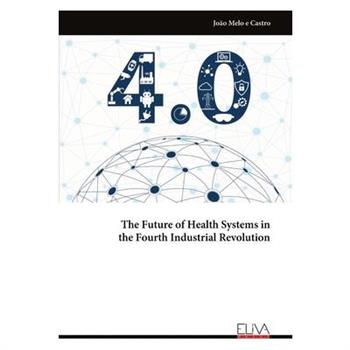



![Cyclop?]dia Of The Practice Of Medicine Cyclop?]dia Of The Practice Of Medicine](https://cdn.kingstone.com.tw/english/images/product/3083/9781024653083m.jpg?Q=74b68)
